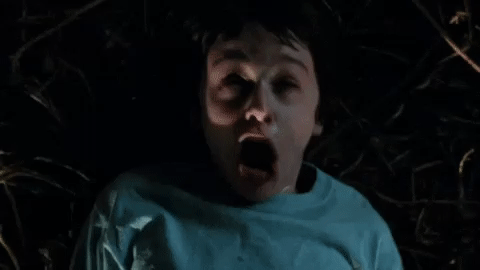Hello, everyone.
Too long ago, I continued my thoughts on games by explaining my positions on the connections between the structure of games and the capital rewards which drive them. In that episode, I ended by teeing up the subject of this one: ideas.
Ideas are tricky to pin down, and their influence is recursive; in analyzing them it is too often easiest to be caught up in semantics and self-influenced rhetoric which fails to strike at any kernel of truth. It’s therefore helpful to move into specifics. In applying the game-frame to the way they transmit, we can then describe those case studies before refitting the resultant descriptions to the game as a whole.
Part One: So Take off all Your Cloches
We’ll begin, then, with a universally present yet ruthlessly concentrated medium through which ideas are created and passed: reality television. It's a fascinating area to study because it is, for the most part, as it presents itself. Beneath the outer layer of carefully manufactured artifice there is an admittance of that selfsame outer layer’s existence, and from that honest, freely presented realization follows the unraveling of the entire genre.

Consider the Pitbull song. No one worth listening to writes thinkpieces on the moral implications of Pitbull songs.
The type of people who are concerned with these things allow Mr. Worldwide’s music to skate on by not because they couldn’t find anything objectionable if they tried, but for two reasons:
They don’t care.
No one else cares.
If either of these things were not true, the outrage would flow freely (a work will not propagate without an author and an audience, but it will be produced with only one condition satisfied.) The explanation for this is simple: Pitbull has positioned himself in a role wherein he does not attract attention. He has created a musical Potemkin village, and flipped it around to show the world that it is made of cardboard; as such, he demands no scrutiny. (Dale!)
Reality television functions similarly in the Zeitgeist, borrowing Mr. 305’s approach for application on a broader scale. There exists criticism of shows’ content, or of the time the average American tithes to that particular screen; there do not exist substantive attacks on its style of transmitting ideas. The genre’s role in society has persisted with increasing levels of cultural influence for the better part of a century, and save for the occasional swipe at trivialities of its character, goes unquestioned. (Dale!)
In other words, reality television is a delineated, strictly ruled method of passing story and idea— sure, those qualities make it difficult to generalize, but they also make it an ideal foothold, one which I’ll gladly scrabble my fingers into. (I really did mean to write this on time; it didn’t happen; sorry about that—) Let’s get started.
Part Two: Ideas are Agents
The equivalence of idea to disease is well-trodden, familiar; it’s a natural analogy derived from the concept that people don’t have ideas; ideas have people:


Ideas viewed this way —as pathogens— possess one core incentive: reproduction. This is best understood by imagining an idea as having agency, attempting to accomplish its goal by maneuvering a number of levers into optimal configurations. For instance:
Emotional character factors into the degree to which ideas spread; (on the Internet,) anger is better than sadness.
Second-order effects (real-life applications; consequences) (which result from and in emotion) influence the incentives of the host, altering rates of (conscious) transmission.
Relation to existing conditions (including the two variables previously listed above) influences the idea’s ability to “catch” or “stick.”
Choice of medium and choices within that medium shape the message.
In this way, it’s easy to break down the isomorphic quality —almost the fungibility— of different Games which are really just subsets of the Game of Ideas. The Game of Media starts to look like the Game of Politics, which distorts into Religion, and within these games the media through which ideas spread mirror each other. Politics’ speeches are Religion’s sermons are Media’s (trickier and more self-important) reality television.
In the article Prophet Over People: On Reality Television, (to which I credit much of the inspiration behind the opening to this episode,) BEAST explores this last parallel: the similarity between reality television and religion, between the star and the prophet, the show and the god. It’s worth a read.
Part Three: Burning Down the Forest
If reality television is a medium, which is a lever, let us then more rigorously examine the composition of reality television; this informs our understanding of it as an example of a medium. Firstly, we must note the (greatly simplified) structure of media in the Game of Ideas:
The two fundamental components of this structure are the Sound and the Image.
We can demonstrate the above by considering the balance inherent in either written or spoken language, each of which are different implementations of the word.
The word is a tool which can be expressed in these ways; it is a surface on which ideas can be carried. So is the number.
Technological frontier expansion creates new media; marginal adoption leads to the discovery of new media applications, which can be labeled pathways.
It’s not the medium, exactly, which does most to determine the idea; it is the pathway. A new medium can be modeled as terrain; take the example of a forest: some media are Mirkwoods, with established paths running through them, where deviation is deadly, while others are Hundred Acre Woods, free for exploration.
Paths are created by attempts at breaching certain locations: attempts at transmission to key hosts, nodes, and network centers. This wears the plant matter down into the ground. If a humdinger of an idea, an Abrams tank, bulldozes through the underbrush, that can constrain further development, because ideas stop looking for new ways to express themselves; there is a prematurely established solution.
When intellectual development is fully stifled and only dirt remains, when every spot in the forest is plumbed and every —or if a new, more fruitful one, is discovered— then medium is no longer useful, it loses market share; the forest is razed, and a small town pops up in its place, populated by rent-seekers, leeches, and those late to the curve. This is the echo of the forest, a mimicry of its wildlife— but there is no more to extract. The town dies. The world moves on.
This can happen slowly, of course, but all that’s left, in the end, is the paper, the once-was, the characterization of the old forest and analogies drawn as the true explorers set off for the new. Sometimes the pathways change; often, they’re the same. Sometimes, new techniques for tree-cutting are passed down; sometimes they’re forgotten; there’s no more Damascus steel to slice through trunks, because the ore was stripped out of a natural deposit which no longer exists. There are ruins in its place now, and very few people go looking through them. For all this talk about keeping up with the Jones’, there aren’t many Indianas.
Or maybe there are too many; what’s the use of a cleared forest if you’re not planting corn?
I am here reminded of Zach Wall’s comparison of a human host for an idea to a slime mold, which provided the starting point for an insightful Twitter thread:


More, hopefully, next week. See you then.


